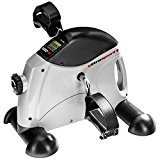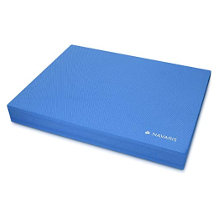Cross trainer purchasing advice: how to choose the right product
- What You Need to Know
- A cross trainer enables the effective training of several muscle groups with movements that are easy on the joints. This makes it suitable for improving fitness and losing weight.
- On the crosstrainer, users train muscle groups in the legs, arms, back and abdomen.
- In order to avoid incorrect training due to irregular movements and incorrect postures, high-quality workmanship of the crosstrainer and optimal interaction of the arm bars and foot pedals are necessary.
- For sufficient stability, the maximum weight load of the crosstrainer should be about 50 percent above the weight of the exerciser.
- High-quality devices have a flywheel mass of at least 20 kilograms and the resistance is continuously adjustable.
What is a cross trainer and what advantages does it offer?
If you keep your body fit, you live healthier. This is because the human body is designed to stand upright and move. However, modern living conditions mean that many people spend a large part of their daily lives sitting down, whether at work in the office or relaxing on the sofa in the evening. This results in a lack of movement, which is not good for the body. It is therefore all the more important to compensate for this lack of movement through sport. One way to do this is to exercise in the fresh air, for example by jogging, walking or cycling. If the weather does not cooperate, gyms are a good alternative. They offer the advantage of having a variety of equipment available for a varied workout. However, gyms are not plentiful in every region, and consumers are dependent on the hours their gym is open. Some people also shy away from sweating in the face of prying eyes from other gym-goers.
An ideal alternative to the gym is to own a cross trainer. Why this is so, how these devices work and what users should look for when buying as well as when training, we illuminate in our crosstrainer comparison.
“Cross” as in “crossed”
A cross trainer consists of two footrests and two movable arm grips. During training, users move their arms and legs against each other – or “crossed”, which is where the name crosstrainer comes from. Depending on the machine and the settings, the movements on the training device are similar to those of jogging or Nordic walking. The intensity of the workout depends, among other things, on the adjustable resistance. This is provided by a so-called flywheel, often also referred to as a flywheel mass.
Challenging and easy on the joints at the same time
In contrast to a stepper, which only challenges the legs, exercisers on a crosstrainer also move their arms. The arm swing stabilizes the running process and involves the entire body. Training on the crosstrainer thus works the muscles in the legs, arms and torso, providing a full-body workout. The following muscles are involved in the movement
- the leg flexors
- the leg extensors
- the buttocks
- the hip flexors
- the lower back muscles
- the big back muscle
- the oblique abdominal muscles
- abdominal wall
- the adductors
- the arm extensors
- the arm flexors
- Chest
- Shoulder girdle
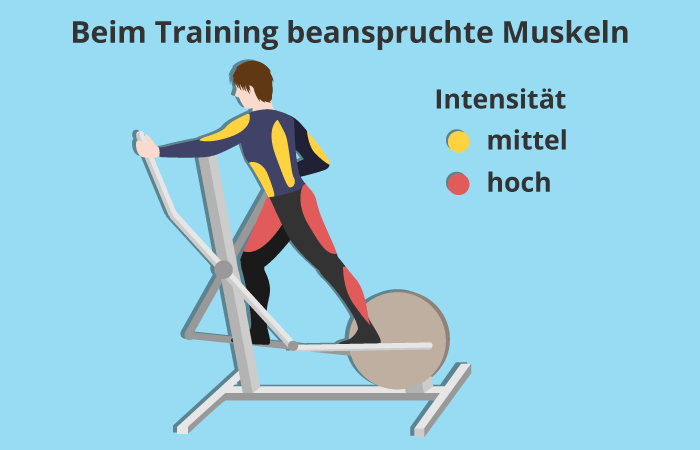
In contrast, a bicycle ergometer, for example, only trains the legs and neglects the arms and back. In addition, users train on the cross trainer in an upright position while sitting on the exercise bike, which they usually already do too often in everyday life anyway. At the same time, unlike other popular fitness equipment such as the treadmill or ergometer, running on the crosstrainer is gentle on the joints because the motion sequence is very flat. This makes crosstrainers suitable for fitness beginners as well as overweight and older people.
Regular training on a cross trainer strengthens the cardiovascular system and improves endurance. In addition, the training boosts fat burning, causes a high calorie consumption and thus helps to lose weight.
Are there any disadvantages to owning a cross trainer?
If you decide to buy your own crosstrainer, however, you will need enough space to set it up. The devices are less suitable for small one-room apartments. Users who want a high-quality crosstrainer with various additional features usually have to dig a little deeper into their pockets. They should plan on at least 400 euros. Professional crosstrainers, as they are usually found in fitness studios, cost up to 5,000 euros. Inexpensive cross trainers, on the other hand, are available for as little as 100 euros.
Pro Points
- Effective training
- Uses many muscle groups
- Gentle on the joints
- Strengthening of the cardiovascular system
- Improvement of the condition
- Promotion of fat burning
- High calorie consumption
- Also well suited for beginners, older and overweight people
Drawbacks
- High space requirement
- Partially expensive
The most important purchase criteria: This is what you should look out for
The price range for crosstrainers is just as large as the variety of models. In our buying guide, we explain what is important for a crosstrainer.
How much does a crosstrainer cost?
Crosstrainers can be roughly divided into three different price categories:
- Inexpensive devices: under 200 euros
- Mid-range models: 200 to 800 euros
- Professional crosstrainers: 800 to 5,000 euros
Firm stand
Very important is a stable stand of the cross trainer. Rubber coated feet ensure that it does not slip even at higher speeds. The foot pedals on which the exerciser stands should also be coated with rubber to prevent users from slipping off the machine while exercising. The dead weight of the exercise equipment provides information about its stability. The heavier it is, the more robust it usually is and the more stable its stand. For exercise bikes, a tare weight of at least 70 kilograms is recommended. Some models are also equipped with adjusting screws that can be used to compensate for unevenness in the floor.
The dimensions
The dimensions of the crosstrainer depend on the height of the user and the space available at the installation site. Taller persons in particular must pay attention to the maximum height of the pedals so that they do not hit their head on the ceiling during training. Depending on the model, an increase in height of about 40 to 50 centimeters can be expected. For correct posture during training, the arm grips must also be rather high for tall users. Conversely, they should not be too high for shorter people.
The set-up dimensions vary depending on the manufacturer and model. Due to their design, front-wheel drive cross trainers are often more compact than rear-wheel drive cross trainers, especially in terms of length. Typically, the dimensions of crosstrainers are in the following range:
- Length: 100 to 220 centimeters
- Width: 50 to 100 centimeters
- Height: 150 to 183 centimeters
Especially for users who have less space available, a foldable crosstrainer that can be stowed away after training to save space is an advantage. With crosstrainers whose flywheel mass is located at the rear, folding is usually not possible. On the other hand, the rear crosstrainer section of many front-wheel-drive machines can often be folded down.
The treads, the pedal distance and the stride length
With regard to the pedals, in addition to high-quality workmanship and an anti-slip coating, the right size is important. Pedals that are too large are not a problem with a good anti-slip coating. However, exercisers with large feet should make sure that they fit comfortably in the footrests.
Also important is the stride length, which should be longer rather than shorter, as exercisers usually find this more comfortable. As a rule, the taller the person exercising, the longer the stride length should be. 40 to 50 centimeters is considered optimal. Almost more important than stride length, however, is its relationship to stride height. The lower the ratio, the easier it is on the joints. The stride length should therefore be as long as possible, at least 38 centimeters, and the stride height as short as possible, at most 20 centimeters. A larger ratio requires very pronounced and less ergonomic up-and-down movements of the upper body.
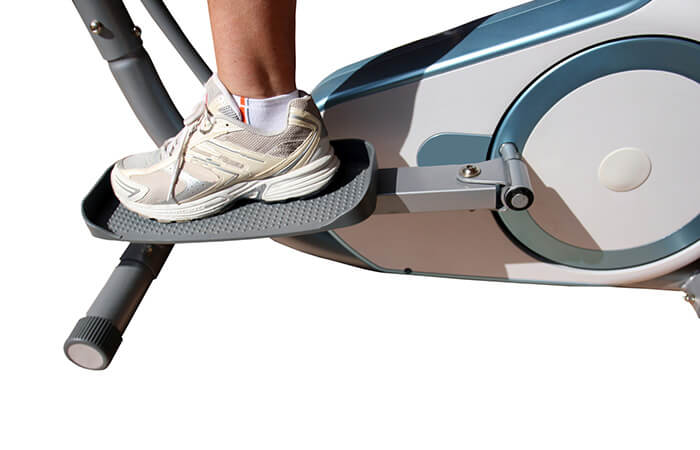
Pedal spacing is primarily important for people with hip or knee problems. For them, the distance should be as small as possible, ideally less than 15 centimeters. For healthy users, pedal distances of 20 to 25 centimeters are perfectly fine, with smaller distances coming closest to the natural walking motion and therefore often being perceived as more comfortable. Many manufacturers list the stride lengths and pedal spacing of their devices, along with other technical data, in the product description.
The maximum weight load
Crosstrainers differ in their maximum weight load depending on the model. Therefore, before buying, users must make sure that the maximum load of the chosen crosstrainer also matches their weight. It is recommended that the maximum load capacity of the machine is about 50 percent higher than the user’s own body weight. For example, if the user weighs 80 kilograms, the crosstrainer should be able to withstand at least 120 kilograms. As a general rule, the heavier the machine, the greater its stability and the slower it wears out.
The flywheel
The flywheel, also known as the flywheel mass, is the counterweight that acts on the braking system to create training resistance. The higher the flywheel mass, the smoother the movement. A flywheel mass that is too low gives the exerciser the feeling of being faster than the crosstrainer and disrupts the flow of movement. Most crosstrainers have a flywheel mass between 5 and 30 kilograms. For a smooth flow of motion, it is recommended to go for a machine with a higher flywheel mass. High-quality crosstrainers are usually equipped with a high flywheel mass of at least 20 kilograms and a magnetic brake system that runs particularly smoothly.
The resistance levels
A good crosstrainer should have as many resistance levels as possible, which provide for variance during training and enable interval training, among other things. Ideally, the resistance is even continuously adjustable so that users can adjust it completely freely. Most devices without continuously adjustable resistance have 8 to 32 resistance levels. In addition, the models differ in whether users adjust the resistance mechanically with a wheel or electronically via the training computer.
The handles
It is important that the arm bars enable the user to adopt a posture in which the upper and lower arms form a right angle. Therefore, the sheathing of the bars should be as large as possible, so that people of different sizes can adopt the correct arm posture. In addition, the sheathing should be high quality, solid and comfortable to the touch, after all, it is always in contact with the hands during exercise. Many crosstrainers have pulse sensors in the handles, which measure the user’s heart rate via their resting hands during the workout.
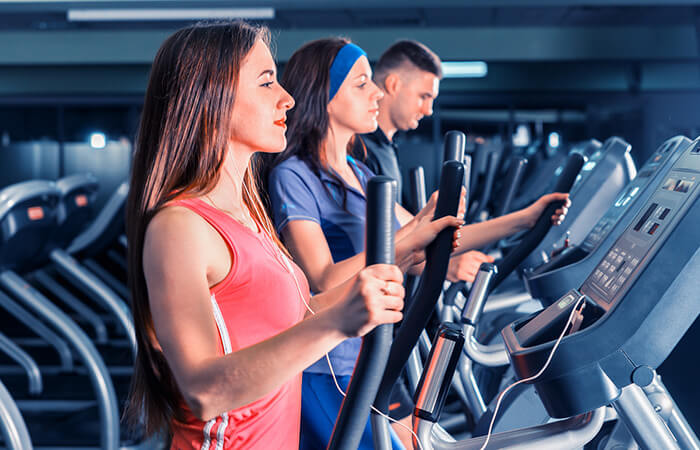
Pulse measurement with chest strap
Crosstrainers from the higher price segment are often equipped with an integrated pulse receiver that is compatible with a chest strap. This usually measures the heart rate more accurately than the sensors in the handles.
The quality and workmanship
A good crosstrainer should be of high quality workmanship. Poor equipment workmanship often results in out-of-round exercise movements and incorrect postures, which can lead to tension, muscle pain and, in the worst case, long-term injuries. In order to avoid unround movements, the arm bars and the foot pedals must interact optimally and must not be wobbly. The prerequisite for this is a complex mechanism, which is often lacking in many inexpensive machines.
Different training programs
The training computer ideally offers many preset training programs as well as numerous options for fine-tuning and at the same time is easy and intuitive to use.
Which and how many preset training programs the crosstrainer should come with depends on the user’s training goals and preferences. The more different programs there are, the more varied the workout will be. There are often special programs for endurance and cardio training (heart and circulation) as well as for muscle building and fat burning. Good cross trainers also offer the option of personalizing the workout programs by having users enter information about their body characteristics and training level. If several people want to train on one device, they should make sure when purchasing that several individual training programs can also be stored.
Operation and readability of the display
While the training computer on some cross trainers is operated via buttons and knobs, other devices are equipped with a touch display. There is no better or worse variant here – it is a matter of taste.
It is also important that the display is clear and all information is easy to read. A backlight makes it easier to read. A good crosstrainer should show the following information on the display:
- The set training resistance
- The selected training program
- The distance already covered
- The current running speed
- The calories burned
- The heart rate, which is usually measured at the handgrips
Useful additional features
Especially crosstrainers from the middle and higher price segments are often equipped with various additional features.
Convenient are, for example, an app connection or a Bluetooth function for wireless connection of the cross trainer with a smartphone or a tablet. The Sportstech CX608 model even offers both options.
With the connected smartphone or tablet, users record their training data, among other things, to analyze it and better recognize training progress. It also gives them the option to use their smartphone or tablet as an input device for the cross trainer. This often provides more setting and selection options than when using the device’s display.
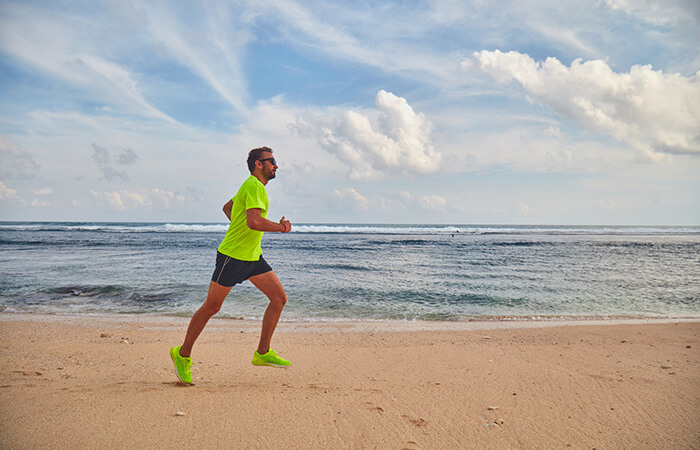
In addition, it is possible to cover virtual routes with some apps, for example via Google Maps Street View.
Ideally, the cross trainer has a suitable holder for smartphones and tablets. Holders for a water bottle and a towel are also practical.
The operating volume
Loud operating noises such as the whirring of the brakes or the rattling and squeaking of unstably manufactured devices are not only annoying for the person exercising, but also for fellow occupants and neighbors. This is especially unfavorable if users want to train during the legal quiet hours. Therefore, it is advisable to make sure that the device is as quiet as possible when purchasing it. As a rule, high-quality, sturdily built crosstrainers with magnetic braking systems are very quiet. Through regular cleaning and maintenance, users prevent their crosstrainer from starting to creak and squeak after prolonged use.
Quieter thanks to underlay mat
If you’re concerned that your cross trainer might be too loud, it’s best to place an underlay mat underneath the machine. Special underlay mats for fitness equipment are available from about 15 euros. They not only absorb the operating noise of the exercise machine, but also protect the floor from scratches.
How do cross trainers work?
A crosstrainer is made up of three main components: The arm bars, the treads and the body. The latter includes a rotating disc, the flywheel with the flywheel mass, which generates the training resistance. The arm bars are directly connected to the foot pedals. In addition to the movable arm bars, many crosstrainers are equipped with fixed arm grips. Between the arm bars is the display of the training computer, on which users can read their training data and make adjustments. By stepping on the legs and swinging the arms in opposite directions, users set the flywheel mass of the crosstrainer in motion.
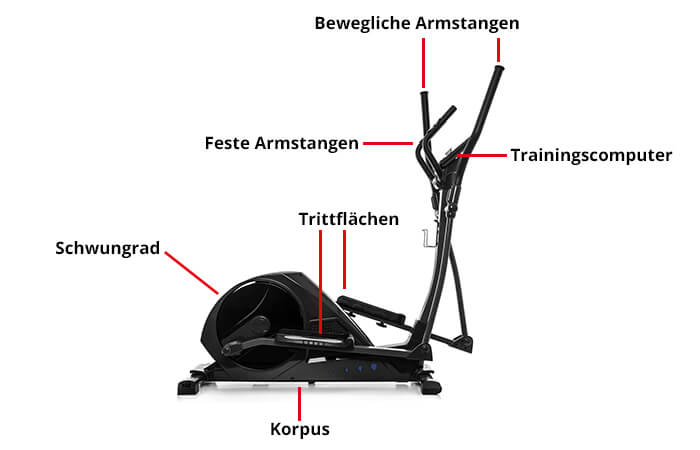
Crosstrainer or elliptical trainer?
There is a little confusion regarding the term elliptical trainer. Is this term a synonym for crosstrainer, so is the elliptical trainer a variant of the crosstrainer, or is an elliptical trainer a completely different piece of fitness equipment? There are different opinions about this. Many gyms or even fitness tracker apps like fitbit use these two terms interchangeably. Others see the difference between the two machines in the position of the flywheel: on the elliptical trainer, it sits in the front (front-driven) and on the crosstrainer, it sits in the back (rear-driven). In fact, the difference between the names is mainly etymological.
Elliptical trainer and crosstrainer: the origin of the word
In mainland Europe, fitness equipment was always called crosstrainer, while in America and Great Britain it was called “elliptical trainer”. The latter name goes back to the elliptical leg movement. With the big American manufacturers such as Life Fitness and ElliptiGo, the name elliptical trainer also spilled over into Europe. Among the most popular German manufacturers are Hammer, Christopeit and Kettler.
In any case, elliptical and cross trainers are fitness machines that allow the user to imitate running movements without vibrations acting on the body.
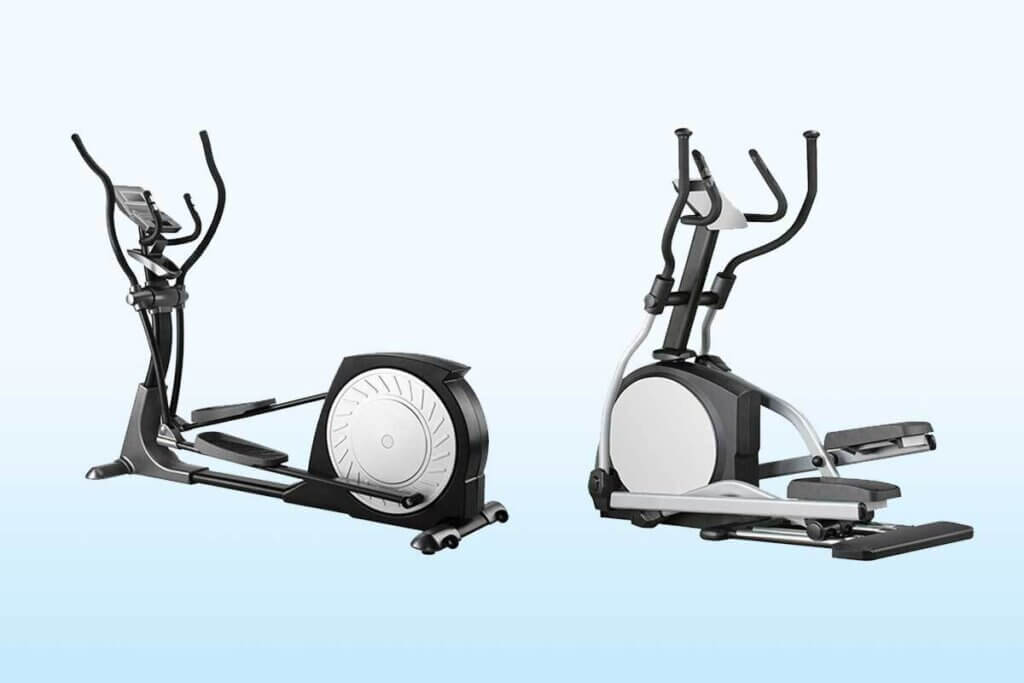
With front-driven machines, the leg movement is usually flatter and longer. This imitates the motion sequence of walking. In addition, the footrests are closer together than on rear-powered machines, which many users find more comfortable. With rear-wheel-drive machines, the motion sequence is more reminiscent of jogging. Leg movements are shorter and higher, which exercises other muscles.
If you have hip problems, it is better to train on a front-wheel drive cross trainer
Basically, it is a matter of taste whether consumers prefer to train on a front- or rear-driven crosstrainer. However, if you have hip problems, it is important that your legs are not too far apart. For a workout that is easy on the hips, we therefore recommend a pedal spacing of less than 15 centimeters, which is usually only offered by front-wheel-drive machines.
In our crosstrainer comparison, you will find both front- and rear-driven training devices. To find out which type of machine suits your personal taste better, we recommend testing both types of machines in a gym or sports store before making a purchase decision.
Different braking systems
Depending on the model, crosstrainers are equipped with a different braking system. Basically, two different braking systems can be distinguished: The induction and the magnetic braking system. Both systems use magnetic fields to brake the flywheel mass. In both cases, the flywheel mass is not touched during braking. As a result, the braking systems are very quiet, have low wear, and produce uniform resistance. The induction and magnetic braking systems differ in the way they generate the magnetic field.
The magnetic brake system
In the magnetic brake system, which most crosstrainers are equipped with, a permanent magnet generates the magnetic field. The closer it is to the flywheel, the higher the resistance. If the model has an integrated motor, users adjust the resistance electronically via the training computer display. On crosstrainers without such a motor, they have to adjust the resistance manually using a handwheel or knob.
The magnetic brake works quietly, is low-wear, and generates even resistance. But it can be even better.
The induction brake system
In the case of an induction brake system, the magnetic field is generated by an electric coil. By changing the voltage of the magnetic field, the resistance can be adjusted. The adjustment is done through the display of the training computer.
Induction brakes are also very low-wear and even quieter than magnetic brakes. In addition, induction brakes allow finer adjustments of the resistance. And another advantage over magnetic brakes is that power control on crosstrainers with induction braking systems is independent of speed. This means that if the exerciser’s speed is too slow or too high, the electronics automatically adjust the resistance. However, crosstrainers with induction braking systems are still rather rare. In addition, they are usually comparatively expensive. In the low price segment they are not found at all, in the middle there are a few. For most crosstrainers with induction brake users have to plan at least 800 euros.
A special type of induction brake is the generator brake system. Here, the exerciser generates the required energy through his movement, similar to a bicycle dynamo. Thus, no electricity from the socket is needed for braking.
What are the different types of crosstrainers?
In addition to the classic crosstrainer, which is either rear- or front-wheel drive, there are other variants of the training device on the market.
Crosstrainer with generator

Common crosstrainers require electricity for braking the flywheel mass as well as for the training computer. If you want to train in an energy-saving and environmentally conscious way, a crosstrainer with generator is the right model for you. Here, the exerciser generates the energy with his movement, so that no connection to the socket is necessary.
Cross trainer for tall people
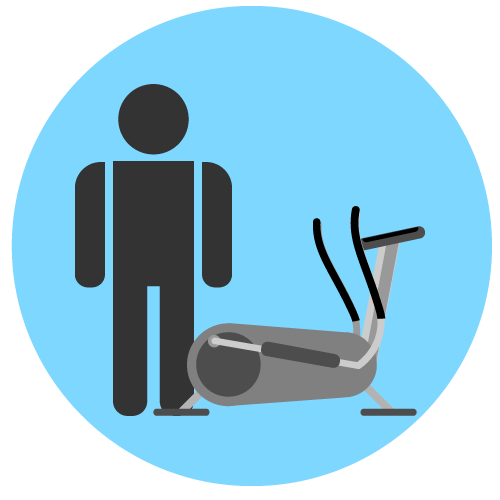
Due to their design, many common crosstrainers are not suitable for people of above-average height. Often the stride length is too short, so that it is perceived as uncomfortable. In some cases, the arm bars are also too short for a healthy training posture for tall people. With compactly built equipment, there is also a risk of bumping the knee during training. Some manufacturers therefore offer special crosstrainers for tall people that feature sufficient knee room, adjustable treads and arm bars, and a stride length starting at 55 centimeters.
Cross trainer home bikes
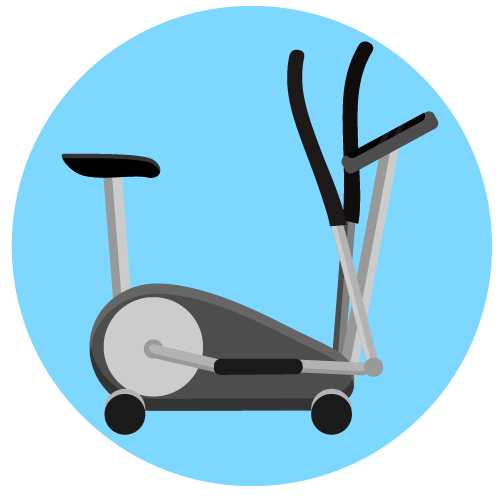
Crosstrainer home bikes, also called eliptical bikes, are a synthesis of a bicycle and a crosstrainer. They are, so to speak, a cross trainer with a bicycle saddle. They are suitable for people who want to sit down while exercising on the cross trainer for health reasons, as well as for people who want more variety on the ordinary exercise bike.
Helpful tips around the crosstrainer
If you want to increase your fitness with the crosstrainer, you should pay attention to some points. In our advice section, we collect helpful tips around the effective training and proper care of a crosstrainer.
The right training duration
Beginners should not start training too ambitiously in order not to overstrain their body. Otherwise, the body will react with painful muscle soreness, forcing them to take a longer break until the next training session. This is also not particularly conducive to motivation. Instead, it is recommended to start with a low resistance, moderate pace and shorter training sessions and gradually increase the training. A good guideline for resistance is a ten percent increase per week.
In addition, a training session should include the following three phases:
- Warm-up: Warm up for five to ten minutes at a low resistance and easy pace to acclimate the muscles to the workload.
- The work phase: increase resistance and pace for five to ten minutes.
- The warm-down: Exercise for another five to ten minutes at a low resistance and moderate pace to calm breathing and loosen muscles.
- For starters, a total of 20 to 30 minutes of exercise is a good time. As fitness levels increase, users can extend their workouts to 60 to 90 minutes.
Pay attention to the pulse
Whether exercisers overload their bodies during training or whether they can still increase their performance is revealed by their heart rate. It is therefore advisable to take a look at the heart rate display every now and then. The maximum heart rate, or HRmax for short, is a guide to the heart rate that should not be exceeded. It depends mainly on the fitness level and age. For newcomers to training, a maximum heart rate of 220 minus age is roughly assumed for men, and 226 minus age for women. For example, the maximum heart rate for a 35-year-old man is 185, and for a woman of the same age it is 191. Exercisers overload their bodies with a higher heart rate. This is just as unhealthy as too little exercise. This is because regular overload causes urea levels to rise and cholesterol levels to deteriorate. In addition, exercise loses its relaxing effect.
The pulse during exercise indicates what is being exercised:
- 60 to 70 percent of HRmax: training basic endurance and promoting fat burning, recommended as light training for beginners.
- 70 to 80 percent of HRmax: endurance training for advanced users
- 90 to 100 percent of the HRmax: improvement of maximum power and speed, ambitious training for professionals
Possible workouts
A cross trainer offers many possibilities for a varied workout. As inspiration for beginners, we present three training methods.
Interval training to increase fitness
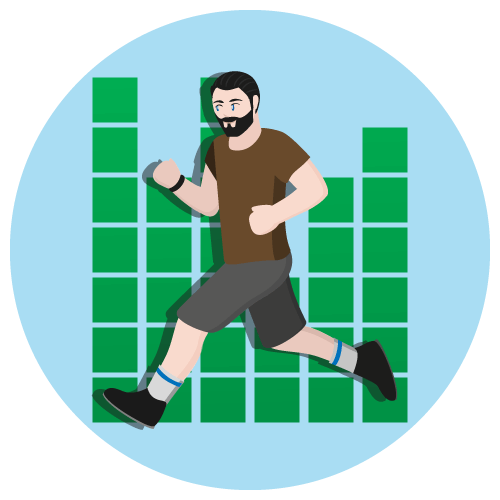
In so-called interval training, exercisers alternate between a high and a low load intensity. For example, five minutes of light training are followed by two to three minutes of training at high resistance at the load limit. This increases fitness and fat burning.
Variety through backward running
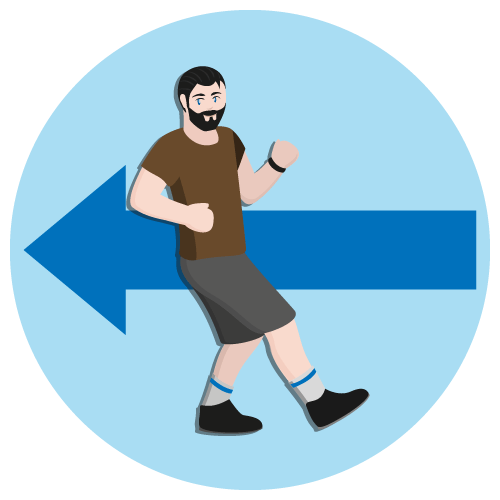
If forward pedaling is too boring for you, you can put your concentration and stamina to the test by turning it around. Running backwards on the cross trainer gives a different motion sequence and thus stresses different muscle parts. It challenges the arms and buttocks more than the forward motion. The alternation between forward and backward running also ensures firm thighs.
Training goal crisp buttocks
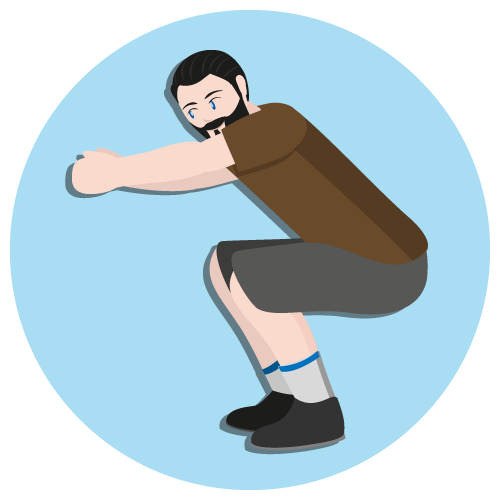
The muscles in the buttocks are particularly stressed on the cross trainer when the user bends his knees a little while running. In addition, he tenses his abdomen and buttocks and trains in this posture for up to 30 minutes.
The correct posture on the crosstrainer
Incorrect posture during exercise leads to painful tension and, in the worst case, even injury. Therefore, users of a crosstrainer must also pay attention to their posture and their movement sequence during training. Manufacturers usually include instructions for the ideal movement sequence with their equipment. Basically, the following rules apply on the cross trainer:
- Keep your head upright.
- Keep your shoulders slightly back.
- Keep your back straight and avoid a hunched back and a hollow back.
- Keep your hips still and do not sway.
- Anyone who already suffers from back problems should not use the cross trainer without first consulting a doctor.
Care and maintenance of the crosstrainer
High-quality crosstrainers are not cheap. In order for users to get something out of the device for as long as possible, regular cleaning and maintenance are necessary. This includes:
- After each workout, wipe down all surfaces with a soft cloth and clean the handles with disinfectant.
- About once a week, use a vacuum cleaner to remove dust and dirt from the tread surfaces.
- About twice a year, more frequently if necessary, lubricate the joints to prevent squeaking and rusting. It is best to use grease recommended by the manufacturer.
- Once a year, check all screw connections for stability and retighten if necessary. Disconnect the device from the power supply beforehand.

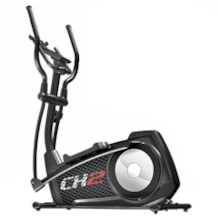
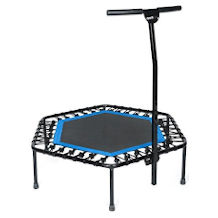
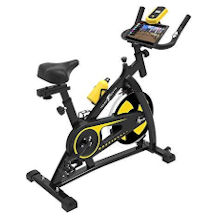
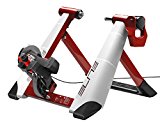
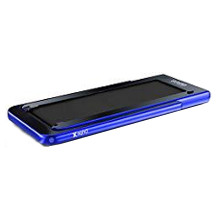
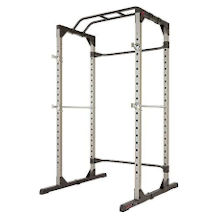
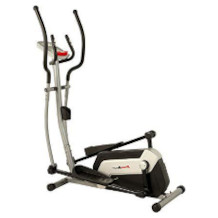
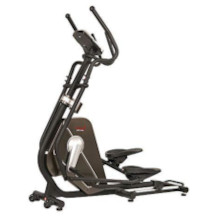
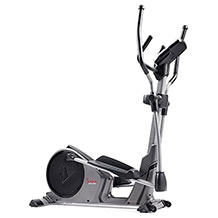
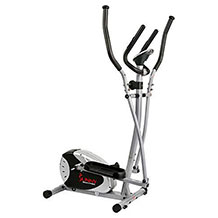
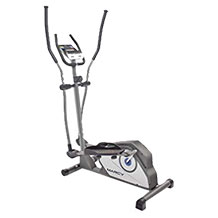

 47 reviews
47 reviews
